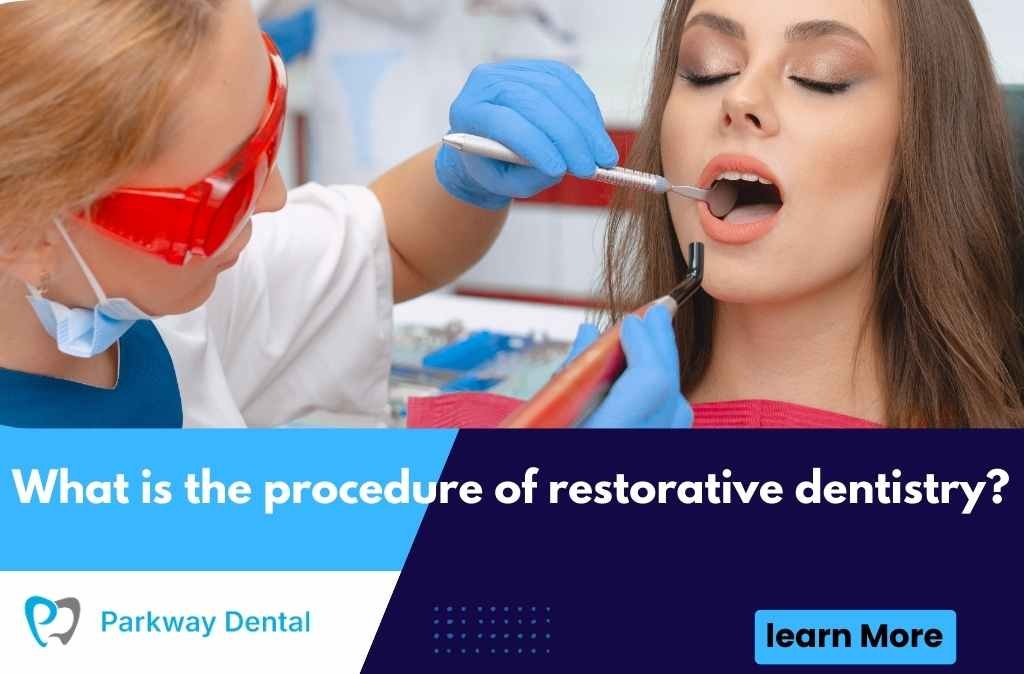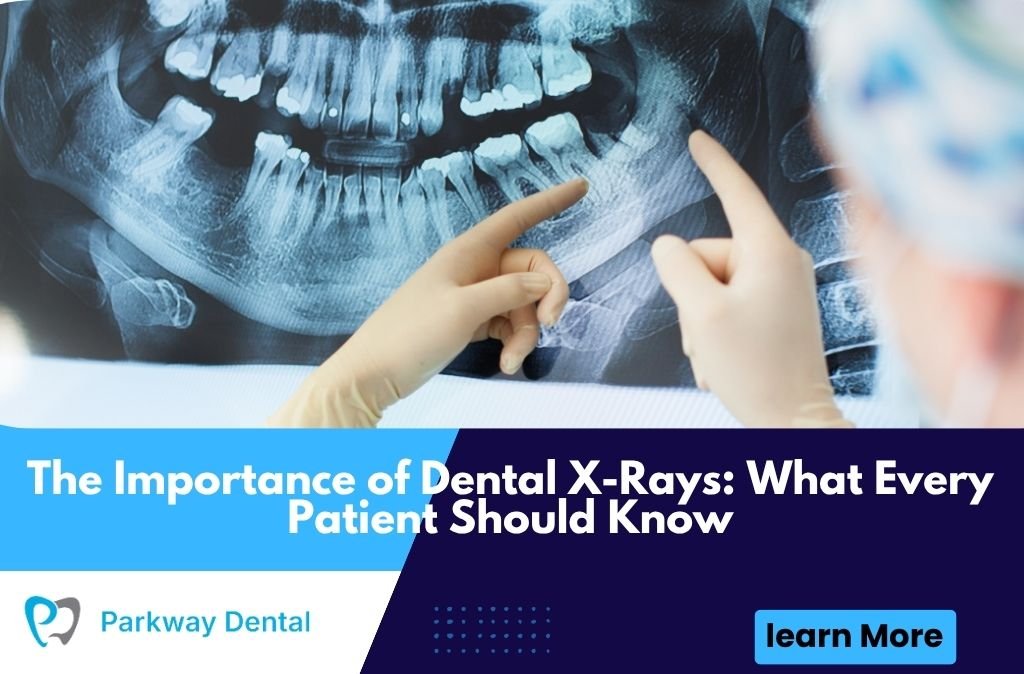Restorative dentistry plays a crucial role in maintaining oral health by repairing damaged, decayed, or missing teeth. Whether addressing minor cavities or more extensive dental issues, restorative procedures help restore the function, integrity, and aesthetics of a patient’s smile.
This guide explores the procedure of restorative dentistry, the different treatments available, and what to expect at each stage of the process.
What Is Restorative Dentistry?
Restorative dentistry is a branch of dentistry focused on diagnosing and treating oral health problems that affect the teeth, gums, and surrounding structures. The primary goal is to restore oral function, structural integrity, and aesthetics while preventing further damage.
Common restorative treatments include fillings, crowns, bridges, dentures, and dental implants. These procedures help patients regain confidence in their smiles and improve overall dental health.
Step-by-Step Process of Restorative Dentistry
The process of restorative dentistry in West Roxbury, MA begins with a thorough examination to assess oral health and determine the best treatment. After cleaning and preparation, the dentist selects the appropriate restoration, such as fillings, crowns, or implants. The procedure is completed with proper fitting, adjustments, and aftercare instructions for long-term success.
Initial Consultation and Examination
The restorative dentistry process begins with a comprehensive dental examination. During this visit, the dentist will:
- Conduct a visual inspection of the teeth and gums.
- Take digital X-rays or 3D scans to assess underlying structures.
- Discuss the patient’s medical history, symptoms, and dental concerns.
- Develop a customized treatment plan based on the patient’s oral health needs.
This step helps determine the best approach for restoring function and aesthetics while addressing any underlying issues.
Cleaning and Preparation
Before proceeding with restorative treatment, the dentist ensures the mouth is clean and free of infection. This may involve:
- Professional dental cleaning to remove plaque and tartar.
- Gum disease treatment if inflammation or infection is present.
- Root canal therapy if the tooth pulp is infected.
- Tooth extraction if a tooth is severely damaged and cannot be saved.
Once the mouth is prepared, the dentist moves forward with the appropriate restoration method.
Selecting the Right Restorative Treatment
The procedure of restorative dentistry varies depending on the severity of damage and the patient’s specific needs. Below are the most common treatment options:
Dental Fillings
Used for treating cavities and minor tooth decay, fillings help restore the tooth’s structure and prevent further damage. The dentist removes the decayed portion of the tooth and fills the space with composite resin, amalgam, or porcelain.
Dental Crowns
For severely damaged or weakened teeth, a dental crown provides protection and strength. The dentist reshapes the affected tooth, takes an impression, and places a custom-made crown over it. Crowns restore function, appearance, and durability.
Dental Bridges
Bridges replace one or more missing teeth by anchoring an artificial tooth to adjacent natural teeth or implants. This option restores chewing ability and smile aesthetics.
Dentures
For patients missing multiple teeth, dentures provide a removable solution that restores oral function. Modern dentures are custom-fitted for comfort and a natural appearance.
Dental Implants
A long-term solution for missing teeth, dental implants involve surgically placing a titanium post into the jawbone. Once healed, a dental crown, bridge, or denture is attached, providing a stable and permanent replacement.
Performing the Restoration Procedure
Once the treatment plan is finalized, the dentist begins the restorative procedure.
- For fillings, the decayed area is cleaned, and the filling material is shaped to match the tooth.
- For crowns and bridges, the dentist prepares the tooth, takes impressions, and fabricates a custom prosthetic. A temporary crown or bridge may be placed until the final restoration is ready.
- For dental implants, the titanium post is surgically inserted into the jawbone. After healing, the implant is restored with a crown or other prosthetic.
Each procedure is designed to restore functionality, appearance, and comfort, ensuring long-term oral health.
Aftercare and Follow-Up Appointments
Following restorative treatment, the dentist provides aftercare instructions to promote healing and prevent complications. Patients are advised to:
- Maintain proper oral hygiene by brushing and flossing daily.
- Avoid hard or sticky foods that could damage the restoration.
- Schedule regular dental checkups to monitor the condition of the restoration.
- Use protective mouthguards if needed, especially for those prone to teeth grinding.
Follow-up appointments ensure that the restoration is functioning properly and that no additional issues arise.
Benefits of Restorative Dentistry
Restorative dentistry provides numerous advantages beyond repairing damaged teeth.
- Restores Chewing and Speaking Ability – Properly restored teeth allow for normal eating and speech patterns.
- Enhances Smile Aesthetics – Dental restorations improve the appearance of the smile, boosting confidence.
- Prevents Further Dental Issues – Addressing decay, fractures, and missing teeth reduces the risk of infections and alignment problems.
- Long-Lasting and Durable Solutions – Many restorative treatments, such as implants and crowns, provide long-term reliability.
By restoring both form and function, these procedures contribute to overall oral health and well-being.
Types of Restorative Dentistry Procedures
Restorative dentistry includes various treatments designed to repair or replace damaged teeth. Common procedures include dental fillings for cavities, crowns for strengthening weakened teeth, bridges to replace missing teeth, dentures for full or partial tooth loss, and dental implants for a permanent and stable solution. Each option restores function and aesthetics.
Dental Fillings
One of the most common restorative procedures, fillings repair cavities by replacing the decayed portion of the tooth with composite resin, amalgam, or ceramic.
Dental Crowns
A crown covers and strengthens a damaged or weakened tooth, preventing further breakage and restoring normal function.
Dental Bridges
Bridges fill the gaps caused by missing teeth, improving both oral function and aesthetics.
Dentures
Available as full or partial dentures, these removable prosthetics help replace missing teeth and restore the ability to chew and speak.
Dental Implants
Considered the gold standard for tooth replacement, implants provide permanent stability and a natural appearance, preventing bone loss and maintaining jaw health.
Cost of Restorative Dentistry
The cost of restorative dentistry varies significantly depending on the type of procedure, materials used, complexity of treatment, and geographical location. Factors such as dentist expertise, clinic reputation, insurance coverage, and additional preparatory treatments can also influence the final cost.
Dental Fillings
Purpose – Fillings restore cavities and prevent further tooth decay.
| Country | Cost of Composite Filling (Per Tooth) | Cost of Amalgam Filling (Per Tooth) |
| United States | $100 – $500 | $75 – $300 |
| Canada | $120 – $450 | $80 – $250 |
| United Kingdom | £80 – £300 | £50 – £200 |
| Australia | AUD 150 – AUD 400 | AUD 100 – AUD 250 |
| India | INR 800 – INR 3,000 | INR 500 – INR 2,000 |
| UAE | AED 300 – AED 800 | AED 250 – AED 700 |
| Germany | €100 – €350 | €80 – €250 |
Composite fillings (tooth-colored) are more expensive than amalgam (silver) due to aesthetic appeal and durability.
Dental Crowns
Purpose – Crowns restore and protect weakened or severely damaged teeth.
| Country | Porcelain Crown | Zirconia Crown | Metal or Gold Crown |
| United States | $800 – $2,500 | $1,000 – $3,000 | $1,200 – $2,500 |
| Canada | $900 – $2,200 | $1,200 – $2,800 | $1,000 – $2,500 |
| United Kingdom | £500 – £1,500 | £600 – £2,000 | £700 – £2,500 |
| Australia | AUD 1,200 – AUD 2,500 | AUD 1,500 – AUD 3,000 | AUD 1,200 – AUD 2,800 |
| India | INR 6,000 – INR 25,000 | INR 10,000 – INR 35,000 | INR 15,000 – INR 40,000 |
| UAE | AED 1,500 – AED 4,000 | AED 2,000 – AED 5,500 | AED 3,000 – AED 6,000 |
| Germany | €500 – €1,800 | €700 – €2,500 | €800 – €3,000 |
Zirconia and porcelain crowns are more aesthetic and durable but cost more than metal-based crowns.
Dental Bridges
Purpose – Bridges replace one or more missing teeth by anchoring to adjacent teeth.
| Country | Traditional 3-Unit Bridge | Implant-Supported Bridge |
| United States | $2,000 – $5,000 | $3,500 – $8,000 |
| Canada | $2,000 – $4,500 | $3,500 – $7,500 |
| United Kingdom | £1,000 – £3,500 | £2,500 – £6,000 |
| Australia | AUD 2,500 – AUD 6,000 | AUD 4,000 – AUD 9,000 |
| India | INR 15,000 – INR 60,000 | INR 40,000 – INR 120,000 |
| UAE | AED 4,000 – AED 10,000 | AED 6,500 – AED 14,000 |
| Germany | €1,500 – €4,500 | €3,000 – €8,000 |
Implant-supported bridges are more expensive but offer better longevity and functionality.
Dentures
Purpose – Removable prosthetics for replacing missing teeth.
| Country | Partial Dentures | Full Dentures |
| United States | $800 – $3,000 | $1,500 – $5,000 |
| Canada | $900 – $2,800 | $1,800 – $4,500 |
| United Kingdom | £500 – £2,500 | £1,000 – £4,000 |
| Australia | AUD 1,000 – AUD 3,500 | AUD 2,000 – AUD 5,000 |
| India | INR 10,000 – INR 40,000 | INR 25,000 – INR 80,000 |
| UAE | AED 2,500 – AED 8,000 | AED 4,000 – AED 12,000 |
| Germany | €700 – €3,500 | €1,500 – €5,500 |
Full dentures cost more than partial dentures but provide complete tooth replacement for patients with extensive tooth loss.
Dental Implants
Purpose – Permanent replacement for missing teeth with a surgically placed titanium post.
| Country | Single Implant (Without Crown) | Full Mouth Implants (All-on-4/All-on-6) |
| United States | $2,500 – $5,000 | $20,000 – $50,000 |
| Canada | $2,000 – $4,500 | $18,000 – $45,000 |
| United Kingdom | £1,500 – £3,500 | £15,000 – £40,000 |
| Australia | AUD 3,000 – AUD 6,500 | AUD 25,000 – AUD 60,000 |
| India | INR 25,000 – INR 80,000 | INR 500,000 – INR 1,500,000 |
| UAE | AED 5,000 – AED 12,000 | AED 40,000 – AED 100,000 |
| Germany | €2,000 – €6,000 | €25,000 – €60,000 |
Implants are the most expensive restorative option but offer permanent, natural-looking, and long-lasting results.
Why Choose Restorative Dentistry?
Opting for restorative dental treatments not only improves oral health but also prevents future complications.
- Helps preserve natural teeth whenever possible
- Reduces pain and discomfort from decay or damage
- Restores full functionality for eating and speaking
- Boosts self-esteem with a healthy, natural-looking smile
For those considering restorative dentistry, working with an experienced dental professional ensures the best outcomes.
Conclusion
The procedure of restorative dentistry offers a wide range of solutions for repairing and replacing teeth. Whether a patient needs a simple filling or advanced dental implants, restorative treatments can restore oral function, health, and aesthetics.
Those seeking expert care should visit a Dentist in West Roxbury, MA, where professionals provide personalized treatment plans to meet each patient’s needs. With the right approach, restorative dentistry helps individuals regain confidence in their smiles and maintain lifelong oral health.







